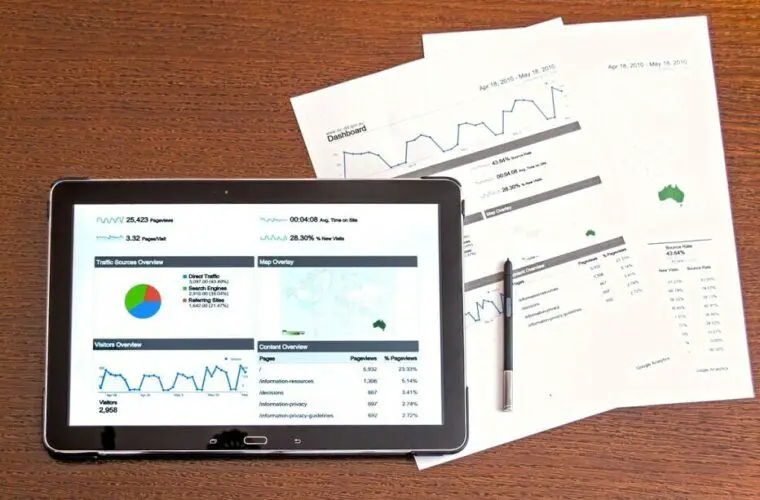If you’ve ever applied for credit, then you have a credit file maintained by one of three major reporting agencies (Experian, Equifax or TransUnion). And if it’s not perfect, you could be missing out on great interest rates. Or worse, your lender may deny your loan application because of inaccuracies in your report. Here is our comprehensive guide on how to dispute and clear your credit report so you can qualify for better loans with lower interest rates.
What Is A Credit File?
A credit file contains information about all of your debt accounts including credit cards, mortgages, car loans and more. It also includes payment history, account balances, types of credit used and recent inquiries made into your credit score. This data is collected from banks, collection agencies, public records and other sources who report back to the bureaus.
Credit reports contain personal identifying information such as name, address and social security number but no financial information like bank account numbers or salary information. They are sold to lenders when someone applies for credit to help determine their risk level before approving them for a new line of credit. Lenders use this information to make decisions on whether they should grant credit, what interest rate to charge and at what terms.
Why You Need To Check Your Own Credit Reports
It’s important to check your own credit files periodically to ensure accuracy and detect fraudulent activity, it is suggested that you check your report at least once a year. In fact, the Fair Credit Act requires each reporting agency provide consumers with free copies once every twelve months upon request. If you find errors, you can work directly with the credit reporting company to fix mistakes. Once corrected, your credit file will reflect those changes and positive amendments to your file can improve your overall credit score!
Some common errors found in credit files include:
* Accounts listed under “credit accounts” which do not belong to you
* Misspelled names or incorrect addresses associated with open lines of credit
* Open accounts incorrectly reported as closed
* Late payments attributed to wrong account numbers
* Negative marks left on your record due to identity theft
Why Do I Need To Fix Errors On My Credit Report?
Even small errors can negatively impact your ability to obtain new credit or even get approved for an apartment lease. So it’s worth taking steps to correct these issues quickly. The good news is fixing credit file errors is relatively easy since there are laws designed to protect consumers against unfair practices.
Here Are Some Examples Of How To Correct Common Errors Found In Credit Files
Inaccurate Information
To remove negative items on your report, first write a letter disputing the error and send it via certified mail, return receipt requested. Be sure to reference the specific section of law allowing you to dispute the item, typically FCRA 623(a)(8) – “information cannot be reported unless it is verified.” Also, indicate clearly what you want removed and why it shouldn’t be included in future reports. Here is a more detailed article on exactly how to correct errors, directly from the FTC.
Account Not Belonging To You
Write a dispute letter explaining that you did not open the account and include proof of the mistake, such as documentation showing another person opened the account. Make sure to specify exactly what you would like corrected and give enough details for the bureau to understand your situation.
Account Closed By Another Party
If an account was closed by another party without your consent, you need to dispute the negative mark on your credit report. Explain in detail what happened and why you weren’t responsible for closing the account. For example, maybe you were laid off and couldn’t afford to continue making payments anymore. Then attach any supporting documents you can gather, such as letters from the creditor stating the reason for closure.
Misspelled Names or Addresses
If your name or address has been misspelled on your credit report, simply contact the credit reporting agency and ask them to update the information correctly. Provide whatever documentation is needed to verify your identification.
Late Payment Marked Under Wrong Account Number
First, call the creditor whose account shows late payments. Ask them to confirm the date paid and account number. Next, dispute the erroneous entry with the credit reporting agency. Attach proof of payment and explain the discrepancy.
Fraudulent Charges
Dispute the charges in writing using the same process described above. When sending your dispute letter, include proof of purchase or sales slips and any correspondence between yourself and the merchant describing the problem. Also, state very clearly that you never purchased the merchandise and the charges are completely unauthorized. Here is some information on how and where to dispute these and other incorrect charges.
Bankruptcy Listings That Shouldn’t Appear
When filing for Chapter 7 Bankruptcy, the court assigns you a case number and orders that it appear on your credit report. However, some creditors don’t comply properly and list this number instead of the proper case type. Dispute this information with the credit reporting agency along with any relevant documentation proving you actually completed bankruptcy proceedings.
Liens Which Have Been Satisfied
When you satisfy a lien by paying off the amount owed, most courts automatically release a satisfaction of judgment form. But sometimes this step gets overlooked and the lien remains active on your credit report long after the matter has been settled. Write a dispute letter indicating the judgment has been satisfied and enclose proof of payment. Send the package via certified mail to both the creditor and the reporting agency.
HOW TO DISPUTE AND CLEAR YOUR CREDIT REPORT
1. Gather Supporting Documentation
Before starting the dispute process, collect as much evidence as possible to prove your claims. These might include bank statements, utility bills, cancelled checks and previous credit reports showing accurate information. Save time by organizing your materials now rather than later.
2. Identify Who Needs Correction
Carefully review your credit report and identify the items requiring correction. Note down the page and line where the entries appear and also the nature of the error.
3. Draft Your Dispute Letter
Using the examples provided earlier, draft a formal letter explaining the corrections required and why they are necessary. Indicate clearly what information needs changing and attach supporting documentation to substantiate your claim.
4. Mail Certified Request For Change
Send your dispute letter via U.S. Postal Service registered/certified mail, return receipt requested. This provides legal verification that your dispute was received by the reporting agency and gives you added protection in case the dispute is ignored or mishandled.
5. Follow Up With Phone Call
After mailing your dispute letter, follow up with a phone call to the credit reporting. We found this website that provides phone numbers for each agency.
Taking control of your credit report is an essential step towards financial health and opportunity. By regularly checking your credit files, promptly disputing any errors, and following through with the correction process, you can ensure that your credit report accurately reflects your financial history. This process may take some time, so just be sure to keep good financial records or your requests and be patient, its worth it.
Remember, a clean and accurate credit report can open doors to better loan terms, lower interest rates, and increased financial flexibility. Don’t let inaccuracies hold you back – use the steps outlined in this guide to dispute and clear your credit report, paving the way for a stronger financial future.
Your diligence today can lead to significant rewards tomorrow.




